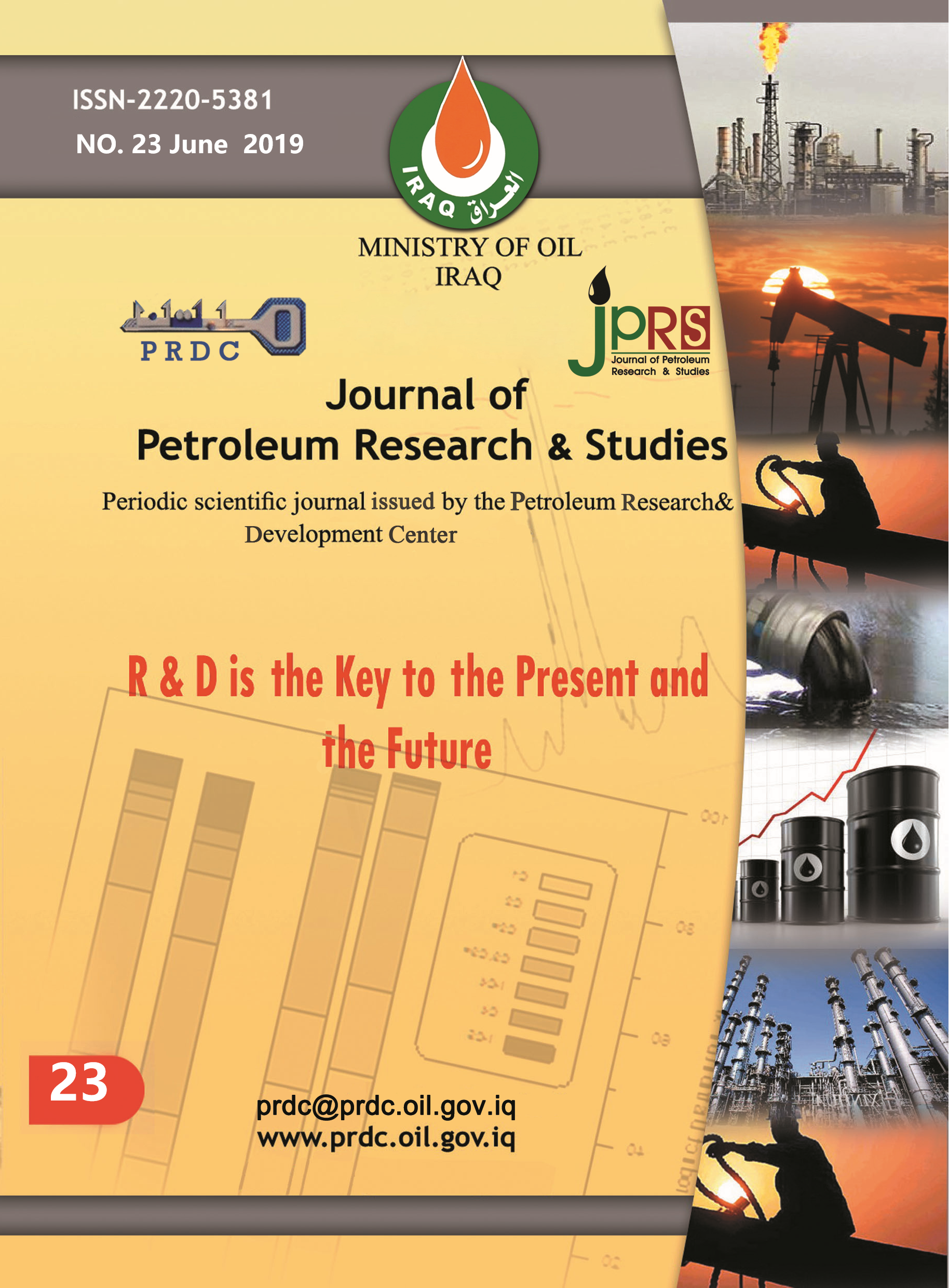Calculating heterogeneity of Majnoon Field/Hartha reservoir using Dykstra Parsons method
DOI:
https://doi.org/10.52716/jprs.v9i2.291Keywords:
heterogeneity, Iraq, Oil field, Dykstra Parsons, Majnoon, HarthaAbstract
One of the principle concepts for understanding the hydrocarbon field is the heterogeneity scale; this becomes particularly challenging in supergiant oil fields with medium to low lateral connectivity in carbonate reservoir rocks.
The main objective of this study is to quantify the value of the heterogeneity for any well, and propagate it to the full reservoir. This is quite useful specifically prior conducting detailed water flooding or full field development studies and work, in order to be prepared for a proper design and exploitation requirements, which fits with the level of heterogeneity of this formation.
The main tool used for these purposes is the application of the famous Lorenz coefficient method, in conjunction with the Dykstra Parsons technique for calculating the degree of heterogeneity for any well.
The starting point for this kind of complicated studies needs to start from the basics. In order to understand the big picture and be able to plan properly for the scope to be delivered. Utilizing analytical tools like the ones mentioned above becomes quite necessary, if not crucial, to the success of full field modelling and choosing an optimum water flood pattern and design.
This work covers the methodology for quantifying and calculating the level of heterogeneity in a given reservoir.
The Dykstra-Parsons Coefficient or the variation of Dykstra Parsons (VDP) is commonly used in calculating permeability variation. The method of calculating begins by sorting the property of interest and make the other property fixed value (to calculate permeability you have to make porosity a fixed value for all calculations) and make permeability in order of decreasing magnitude.
For each of the values calculate the percentage of values greater or the ‘cumulative probability’, so that the probability of X is P(x≤X). Then plot the original permeability values on a log probability graph with the cumulative probability values. The slope value and the intercept of the line of the best fit, for all data are used to calculate the 50th and 84th probability values or by variation layering system to calculate the variation of P10, P50 and P90, which are used to find VDP.
This methodology has been tested successfully in the stated super giant oil field, in which the reservoir is a carbonate rock formation. The reservoir is areally extensive reservoir and not of a great thickness.
The importance of this step is to conclude a utilizing heterogeneity calculation method before conducting any detailed reservoir simulation study. It can save a lot of time and effort by providing guidance to the path, which needs to be followed, and sheds light on the critical elements to be looked after. This also can help to uncover many insights on the reservoir itself, hence allowing the engineer to plan for the necessary voidage replacement and water injection rates to sustain the reservoir pressure and pattern development based on the magnitude of heterogeneity those results from this procedure.
The suggested method, in combination with geological and petrophysical information available, can be applied to majority of the reservoirs. This combination is paramount to ensure optimum time and planning is followed for each reservoir development study that involves for example water flooding
Downloads
Published
How to Cite
Issue
Section
License
Copyright (c) 2020 Jihad Husain Al-Joumaa, Mohammed S. Al-Jawad

This work is licensed under a Creative Commons Attribution 4.0 International License.














